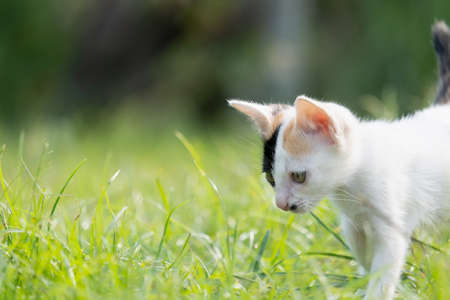1. Understanding British Weather and Its Impact on Rabbits
When it comes to choosing the right home for your rabbit in Britain, understanding the local weather is essential. The UK’s climate is famously unpredictable, with frequent rain, chilly winds, and occasional heatwaves, all of which can affect your bunny’s health and wellbeing. Whether you are considering indoor or outdoor housing, it’s crucial to factor in seasonal changes and weatherproofing measures to ensure your rabbit remains comfortable and safe throughout the year.
The Challenges of the British Climate
Rabbits are sensitive creatures that thrive best within a stable temperature range. In the UK, sudden drops in temperature during winter and damp, rainy conditions can pose significant risks for outdoor bunnies. Meanwhile, summer months may bring heatwaves that make proper ventilation an absolute necessity. It’s important to evaluate how each season impacts your housing choices:
| Season | Weather Concerns | Housing Considerations |
|---|---|---|
| Winter | Cold snaps, frost, snow, icy winds | Insulated hutches, draught-proofing, extra bedding, indoor relocation if necessary |
| Spring/Autumn | Unpredictable rain showers, fluctuating temperatures | Waterproof covers, raised hutches to avoid dampness, regular checks for leaks or mould |
| Summer | Heatwaves, high humidity | Shaded areas, good ventilation, access to cool water, avoidance of direct sunlight |
The Importance of Weatherproofing
For outdoor housing, robust weatherproofing is non-negotiable. This means investing in a solid roof with no leaks, sturdy walls that keep out wind and rain, and secure flooring to prevent rising damp from the ground. Regular maintenance is vital—British weather can quickly take its toll on even the best-built hutches.
Indoor vs Outdoor: What’s Best for British Bunnies?
The choice between indoor and outdoor living often depends on your household setup and how much time you can dedicate to caring for your pet in different seasons. Indoor rabbits generally enjoy more consistent temperatures but need ample space and enrichment. Outdoor rabbits benefit from fresh air and natural light but require vigilant protection against harsh weather conditions. As we journey through this guide together, we’ll explore both options in detail so you can make a compassionate choice tailored to your bunny’s needs—and the ever-changing British skies.
Rabbit Welfare Standards in Britain
Ensuring your rabbit’s well-being starts with understanding and adhering to the welfare standards set forth in Britain. The Royal Society for the Prevention of Cruelty to Animals (RSPCA) provides comprehensive guidelines, while British law requires that all pet rabbits are provided with an environment that meets their physical and emotional needs. This is not just a matter of kindness—it’s a legal obligation under the Animal Welfare Act 2006.
RSPCA Guidelines for Rabbit Housing
The RSPCA has outlined clear expectations to ensure that rabbits have enough space, shelter, and opportunities for exercise. Below is a summary of the key requirements:
| Aspect | Minimum Standard |
|---|---|
| Living Space | At least 3m x 2m x 1m high per pair of rabbits |
| Shelter | Weatherproof, insulated, draught-free hutch or indoor enclosure |
| Exercise Area | Permanent access to a secure run or safe room |
| Bedding | Adequate soft bedding such as hay, straw, or paper-based products |
| Enrichment | Toys, tunnels, platforms, and safe items for gnawing and exploring |
| Companionship | Ideally housed in compatible pairs or groups; rabbits are social animals |
British Legal Requirements for Rabbit Care
The Animal Welfare Act 2006 makes it an offence not to provide suitable living conditions for your rabbit. This includes:
- A suitable environment (including shelter and a comfortable resting area)
- A proper diet (including fresh water)
- The ability to exhibit normal behaviour patterns (through sufficient space and enrichment)
- Housing with, or apart from, other animals as appropriate for their species and temperament
- Protection from pain, suffering, injury, and disease (regular health checks and clean environments)
Why Compliance Matters
Meeting these standards isn’t only about following the law—its about giving your rabbit the best possible life. Every rabbit deserves a home where they feel secure, stimulated, and loved. By embracing these welfare guidelines, you’re contributing to a culture of compassion that defines modern British pet care.

3. Indoor Living: Setting Up a Safe and Stimulating Home
Creating a comfortable indoor environment for your rabbit in Britain requires thoughtful planning, blending safety with enrichment to ensure your furry companion thrives. British homes vary in size and layout, but every indoor rabbit deserves a space that caters to their natural behaviours while keeping them protected from common household hazards.
Essential Components of an Indoor Rabbit Environment
| Feature | Details |
|---|---|
| Space Requirements | A minimum of 1.5m x 2m of accessible floor space per rabbit, with a ceiling height allowing them to fully stand up. Free-roaming or large exercise pens are ideal. |
| Flooring Considerations | Soft, non-slip surfaces such as rugs or foam mats protect delicate paws and joints. Avoid wire floors and slippery tiles. |
| Enrichment Opportunities | Tunnels, cardboard boxes, chew toys, willow balls, and platforms encourage exploration and mental stimulation. |
| Safe Zones | Hideaways like wooden houses or fabric tunnels provide security when rabbits feel anxious or need rest. |
| Litter Training | A litter tray filled with dust-free hay or paper-based bedding supports hygiene and easy cleaning. |
Rabbit-Proofing Your Home
British households often feature exposed electrical cables and precious skirting boards—both irresistible to curious rabbits. Use cable covers, block off unsafe areas with playpens or stair gates, and remove toxic plants. Remember, supervision is key until you are confident your home is truly bunny-proofed.
The Importance of Social Interaction and Routine
Bunnies are social animals who flourish with daily companionship, whether from humans or other rabbits. Set aside time for gentle interaction and allow them to follow a routine; this predictability helps build trust and reduces stress, especially in the sometimes unpredictable British climate.
A Compassionate Commitment
Bringing a rabbit indoors is a commitment to their welfare and happiness. By providing an enriching environment tailored to their needs, you not only keep them safe from Britains chillier months but also nurture their inquisitive spirits—creating a warm haven where they can hop, play, and truly belong.
4. Outdoor Living: Securing Gardens and Hutches
For many rabbit owners in Britain, offering rabbits an outdoor home is a way to embrace their natural instincts and provide ample space for exploration. However, our varied British weather and local wildlife present unique challenges that must be addressed to ensure your rabbits’ safety and comfort.
Predator-Proofing Your Rabbit’s Home
Foxes, badgers, stoats, and even domestic pets can pose significant risks to outdoor rabbits. It’s crucial to invest in robust hutches and runs made from sturdy materials. Welded mesh, rather than chicken wire, should be used as it is more resilient against chewing or clawing. Secure locks (not simple twists) will further deter clever predators.
| Feature | Recommended Specification | Why? |
|---|---|---|
| Mesh Type | Welded galvanised mesh (minimum 16 gauge) | Prevents predators from breaking in; resists chewing |
| Hutch Locks | Bolted or padlocked fastenings | Difficult for predators to open |
| Flooring | Solid base or buried mesh beneath run | Stops digging in or out |
Weather Protection: Keeping Rabbits Comfortable Year-Round
The British climate can swing between damp winters and unpredictable summers. Insulated hutches are essential—line walls with pet-safe insulation and provide plenty of straw bedding during colder months. In summer, shade is vital to prevent overheating; position the hutch away from direct sunlight and consider adding a waterproof cover for sudden showers. Raised hutches also help prevent damp rising from the ground.
Quick Tips for Weather-Proofing:
- Add windbreaks using tarpaulin or wooden panels on exposed sides.
- Place water bottles inside protective sleeves to prevent freezing.
- Create sheltered hideaways within the run using cardboard boxes or tunnels.
The Importance of Space for Natural Behaviours
Rabbits are active creatures who need room to hop, stretch, and dig. The RWAF (Rabbit Welfare Association & Fund) recommends a minimum combined hutch and run size of 3m x 2m x 1m high per pair of rabbits—think “a minimum of three hops” as a rule of thumb. Outdoor set-ups should allow for safe grazing, supervised free-roaming when possible, and enrichment such as tunnels, platforms, and digging areas.
A Well-Designed Outdoor Set-Up Should Provide:
- Shelter: Dry, draught-free sleeping area lined with hay/straw.
- Space: Room for running and jumping—never just a small hutch.
- Enrichment: Toys, tunnels, platforms, safe branches for gnawing.
- Security: Double-check all latches every evening to keep your rabbits safe overnight.
By thoughtfully predator-proofing your garden space, weatherproofing the hutch, and prioritising space for natural behaviours, you can offer your rabbit a safe haven that honours their instincts—right in the heart of the British outdoors.
5. Balancing Social Needs and Companionship
Rabbits are highly social animals, and their well-being is deeply connected to the companionship they receive—be it from other rabbits or their human carers. Whether you choose to house your rabbit indoors or outdoors in Britain, ensuring ample opportunities for social interaction is essential for both their emotional and physical health. A solitary rabbit can quickly become lonely and develop behavioural issues such as chewing, aggression, or withdrawal.
The Role of Housing in Social Interaction
Your choice of housing plays a significant role in supporting bonding experiences. Indoor setups often allow for more frequent human interaction, as your rabbit becomes part of daily family life. Outdoor enclosures, if thoughtfully designed, can also support healthy rabbit-to-rabbit relationships—especially if you have space for bonded pairs or groups. Regardless of location, the living environment should be safe, spacious, and stimulating enough to encourage natural behaviours like grooming and play.
Comparing Social Opportunities: Indoors vs Outdoors
| Aspect | Indoor Housing | Outdoor Housing |
|---|---|---|
| Human Interaction | Frequent; rabbits are part of household routines | Less frequent; requires purposeful time spent outdoors with them |
| Rabbit Companionship | Easier to monitor bonding and intervene if needed | Larger spaces allow more room for pairs/groups, but needs secure fencing |
| Stimulation & Enrichment | Varied toys, tunnels, and regular changes possible indoors | Natural sights/smells/sounds; opportunity to dig and graze |
Supporting Healthy Relationships
No matter where your rabbits live, aim to provide at least one compatible companion—rabbits are happiest when not alone. For single rabbits, spend quality time daily through gentle stroking, play sessions, and talking softly to build trust and affection. If introducing new rabbits, do so gradually and under supervision to prevent territorial disputes. For both indoor and outdoor housing in Britain’s variable climate, always ensure shelter is accessible so social interactions can continue comfortably year-round.
6. Sustainability and Ethical Considerations
As Britons, we take pride in our deep-rooted respect for the environment and animal welfare. When choosing housing for your rabbit—be it a cosy indoor setup or a robust outdoor hutch—its essential to consider not only your pet’s comfort but also the sustainability and ethical impact of your choices. Opting for eco-friendly materials and supporting responsible manufacturers can make a world of difference, both for your rabbit and the planet.
Eco-Friendly Housing Options
Many suppliers in the UK now offer rabbit hutches and runs crafted from sustainably sourced timber, recycled plastics, or upcycled materials. Choosing products made from FSC-certified wood or those with minimal chemical treatments helps reduce environmental harm while ensuring safe living conditions for your furry friend. Here’s a quick comparison of common housing materials:
| Material | Sustainability | Durability | Animal Welfare Impact |
|---|---|---|---|
| FSC-certified Timber | High (responsibly managed forests) | Very good | Natural insulation; safe if untreated |
| Recycled Plastic | High (reduces landfill waste) | Excellent (weather-resistant) | Easy to clean; non-toxic options available |
| Treated Softwood | Medium (depends on treatment chemicals) | Good | Chemical-free options are safer |
Supporting British Values: Local Sourcing and Fair Trade
Where possible, choose housing manufactured locally within Britain or from fair trade suppliers. This supports British industry, reduces carbon footprint from transport, and aligns with our national commitment to ethical standards.
The Broader Impact: Conscious Choices for Future Generations
Your decisions as a rabbit carer ripple outwards: sustainable choices help preserve Britain’s countryside and wildlife for generations to come. By investing in quality, long-lasting housing built with care for both animals and the earth, you’re setting a compassionate example rooted in community spirit and stewardship.
A Final Thought: Compassion in Every Corner
Selecting sustainable housing is more than a trend—it’s an embodiment of British compassion and responsibility. By thinking ethically about your rabbit’s home, you’re nurturing both your beloved companion and the world they hop through.


